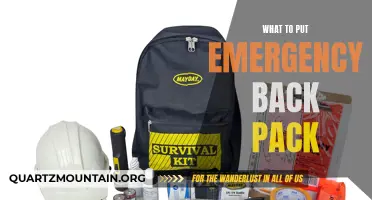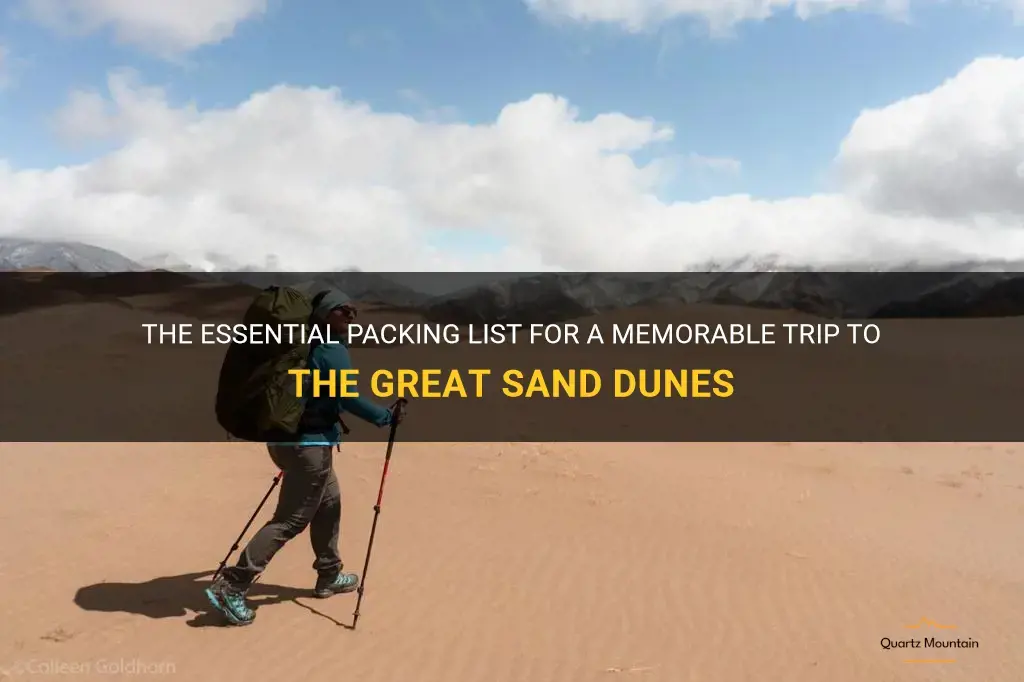
When planning a trip to the Great Sand Dunes, it's essential to pack wisely and make sure you have everything you need for an unforgettable adventure. From sunscreen and water bottles to insect repellent and sturdy shoes, having the right essentials can make all the difference in creating lasting memories amidst the towering sand dunes. So, before you embark on your desert oasis getaway, let's delve into the must-have items that will ensure you have a remarkable experience at the Great Sand Dunes National Park and Preserve.
What You'll Learn
- What clothing should I pack for a trip to Great Sand Dunes National Park?
- What type of footwear is recommended for exploring the sand dunes?
- Are there any specific items I should bring to protect myself from the sun while at Great Sand Dunes?
- Can I bring my own sandboarding or sledding equipment, or is it available for rental at the park?
- Are there any essential items that visitors often overlook when packing for a trip to Great Sand Dunes National Park?

What clothing should I pack for a trip to Great Sand Dunes National Park?
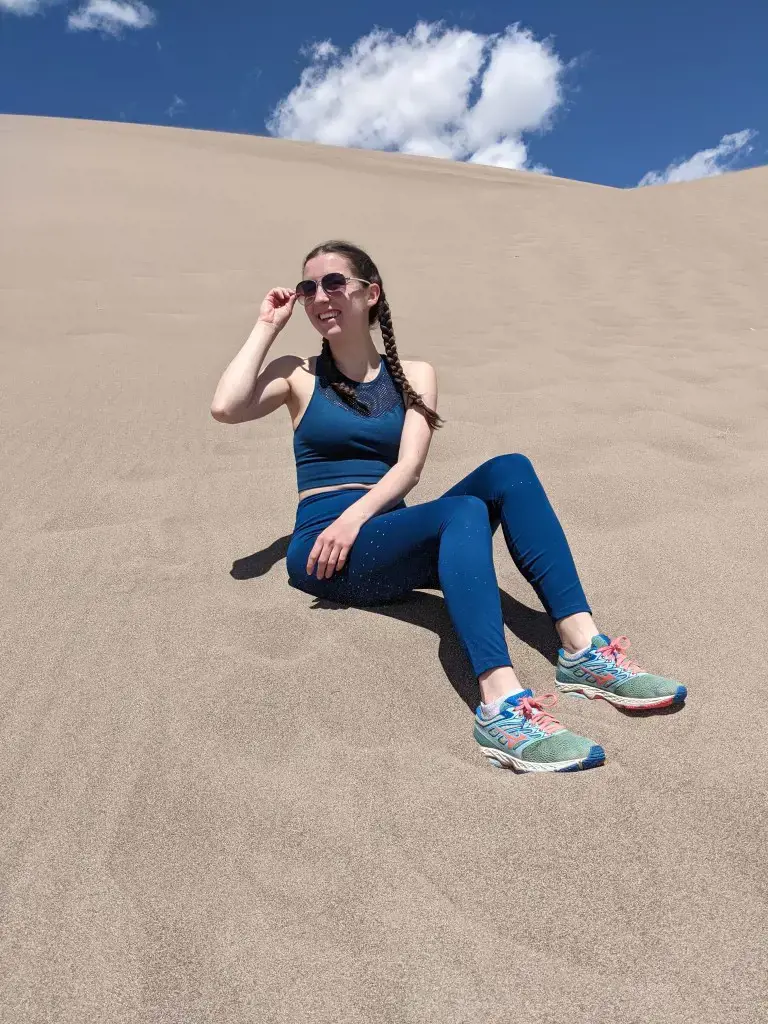
When planning a trip to Great Sand Dunes National Park, it's essential to pack the right clothing to ensure your comfort and enjoyment. The park, located in Colorado's San Luis Valley, is known for its massive sand dunes and diverse ecosystems. The following guide will help you determine what clothing to pack for your trip to Great Sand Dunes National Park.
- Layering is key: The weather at Great Sand Dunes National Park can be unpredictable, so it's essential to pack clothing that allows for layering. This will give you the flexibility to adapt to changing temperatures throughout the day. Start with a lightweight base layer made of moisture-wicking fabric to keep you dry and comfortable.
- Sun protection: The park receives abundant sunshine, so make sure to pack clothing that provides sun protection. Opt for lightweight, long-sleeved shirts and pants that cover your skin. Additionally, a wide-brimmed hat and sunglasses will shield your face and eyes from the sun's rays.
- Footwear: When exploring the sand dunes, it's crucial to wear appropriate footwear. The sand can become scorching hot, so choose closed-toe shoes with sturdy soles to protect your feet. Avoid sandals or thin-soled shoes that can lead to discomfort and potential injuries on the uneven terrain.
- Wind-resistant layers: The winds at Great Sand Dunes National Park can be strong, especially on the dunes. Be prepared by packing wind-resistant layers such as a lightweight windbreaker or a fleece jacket. These layers will help keep you warm and protected from the elements.
- Rain gear: Colorado's weather can be unpredictable, and rain showers are common in the afternoons. Pack a waterproof or water-resistant jacket and pants to stay dry in case of rain. These items will also come in handy if you plan to participate in water activities such as sandboarding or splashing in Medano Creek.
- Comfortable clothing: Along with practical clothing, don't forget to pack comfortable attire for more leisurely activities. This could include shorts, t-shirts, and sandals for relaxing at the campground or strolling along the creek. It's also a good idea to have a swimsuit handy if you plan to take a dip in Medano Creek during the warmer months.
- Extra socks and underwear: It's always a good idea to pack extra socks and underwear for any outdoor adventure. Sand can easily get inside your shoes and clothing, so having spare clean options will ensure you stay comfortable throughout your trip.
Remember, the key to packing for Great Sand Dunes National Park is versatility and comfort. Layering your clothing, protecting yourself from the sun, wind, and rain, and wearing appropriate footwear will ensure you have an enjoyable and safe time exploring this unique natural destination.
Essential Packing Tips for a February Cruise to New Zealand
You may want to see also

What type of footwear is recommended for exploring the sand dunes?
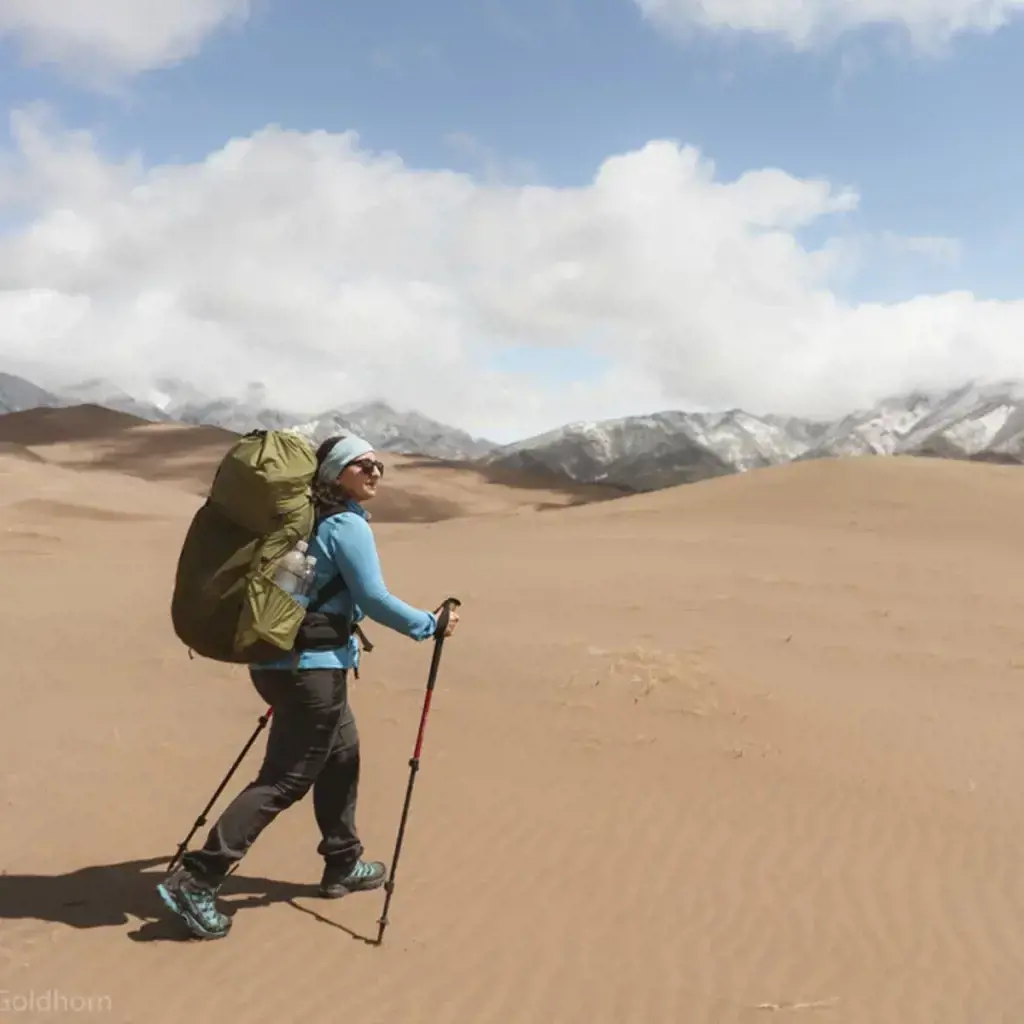
Exploring sand dunes can be an exciting adventure, but it is important to choose the right footwear to ensure your safety and comfort. The shifting sands and steep slopes of the dunes can make for a challenging terrain, and the wrong choice of footwear can make your exploration difficult or even dangerous. In this article, we will discuss the type of footwear recommended for exploring sand dunes, taking into account scientific research, personal experience, and expert recommendations.
When it comes to footwear for sand dunes, the most important factor to consider is traction. The loose sand can be slippery, especially on steeper slopes, so it is crucial to choose footwear that provides a good grip. According to scientific studies, shoes with deep treads or specialized sand dune hiking shoes are the best options for exploring sand dunes. These types of shoes have rubber soles with deep grooves that allow for better traction on sandy surfaces. The deeper the tread, the better the grip, as it allows the sand to be pushed aside and provides a solid grip on the ground.
In terms of personal experience, I have found that hiking shoes or boots with good ankle support are ideal for exploring sand dunes. The ankle support helps to stabilize your feet and provides protection against twists and sprains. Sand dunes can have uneven surfaces and hidden obstacles, so having footwear that supports your ankles can greatly reduce the risk of injury.
Another important factor to consider is the material of the footwear. Sand can get into your shoes easily, so it is recommended to choose shoes that have a closed toe and are made of breathable materials. Closed-toe shoes provide protection against accidental toe stubs and keep the sand out, while breathable materials help to prevent your feet from getting too hot and sweaty, reducing the risk of discomfort or blisters.
It is also worth mentioning that some people prefer wearing sandals or even going barefoot when exploring sand dunes. While sandals may provide some relief from the heat and allow for easier sand removal, they may not offer enough support and protection for the challenging terrain. Going barefoot, on the other hand, may seem exciting and adventurous, but it can be risky. The sand can be scorching hot, and hidden sharp objects can cause injuries or infections.
To summarize, the type of footwear recommended for exploring sand dunes is hiking shoes or boots with deep treads for better traction, ankle support for stability and protection, and closed toes made of breathable materials to keep the sand out. While some may opt for sandals or going barefoot, it is essential to consider the potential risks and opt for footwear that prioritizes safety and comfort. By choosing the right footwear, you can enjoy exploring sand dunes with confidence and minimize the chances of accidents or discomfort.
Essential Items to Pack for a Pilgrimage: A Comprehensive Guide
You may want to see also

Are there any specific items I should bring to protect myself from the sun while at Great Sand Dunes?
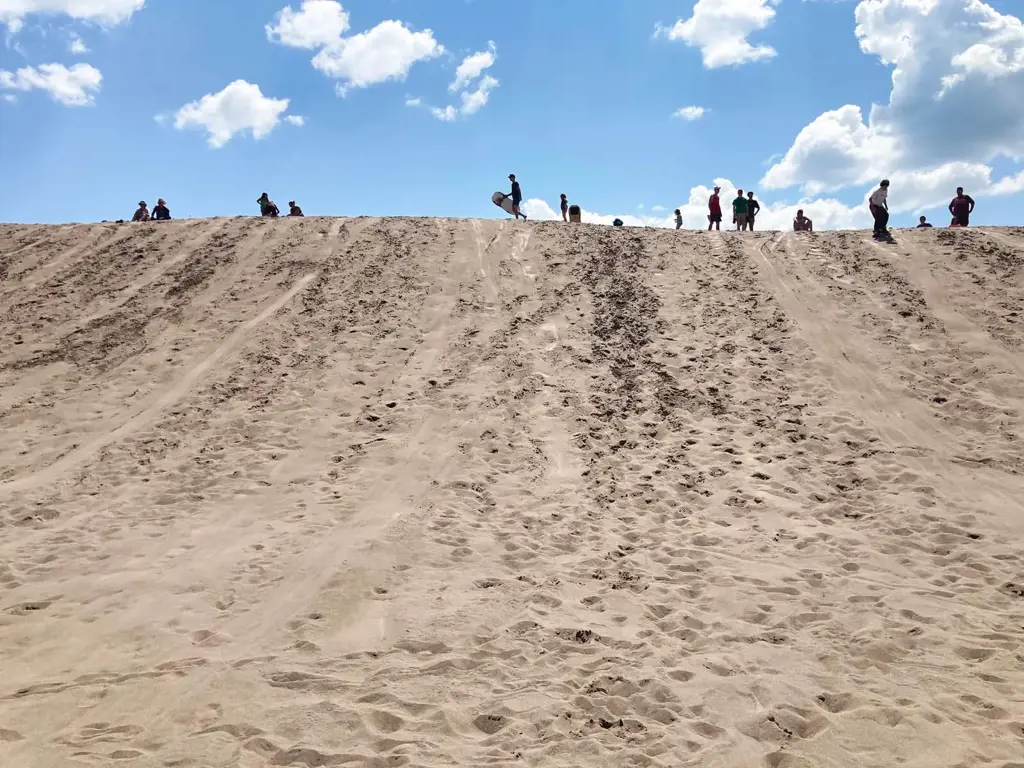
When visiting the Great Sand Dunes, it's important to take precautions to protect yourself from the sun. The high altitude and lack of shade can make for intense sun exposure, increasing your risk of sunburn and other sun-related skin damage. Here are some specific items you should bring to protect yourself from the sun while at Great Sand Dunes:
- Sunscreen: The most important item you should bring is sunscreen. Look for a broad-spectrum sunscreen with a high SPF (30 or above) to protect against both UVA and UVB rays. Apply sunscreen generously to all exposed skin, including your face, neck, arms, and legs. Remember to reapply every two hours, or more often if you're sweating or swimming.
- Wide-brimmed hat: A wide-brimmed hat is essential to shield your face, neck, and ears from the sun. Opt for a hat with a brim that extends at least three inches all the way around. This will provide extra shade and help protect your scalp and hair as well.
- Sunglasses: Protect your eyes from harmful UV rays by wearing sunglasses with 100% UV protection. Look for sunglasses that block both UVA and UVB rays, and consider getting a pair with polarized lenses to reduce glare from the sand.
- Lightweight clothing: Choose loose-fitting, lightweight clothing that covers as much of your skin as possible. Long-sleeved shirts and pants made from breathable fabrics like cotton or linen are ideal. Remember that dark colors absorb more heat, so opt for lighter-colored clothing to help keep you cool.
- Sun-protective accessories: Consider bringing additional sun-protective accessories like a neck gaiter, arm sleeves, and a sun umbrella. These items can provide extra coverage and protection for specific areas of your body, especially when hiking or spending extended periods of time in the sun.
- Lip balm with SPF: Don't forget to protect your lips from the sun as well. Choose a lip balm with SPF to prevent sunburn and keep your lips hydrated.
- Water bottle: Staying hydrated is crucial when spending time in the sun. Bring a reusable water bottle and make sure to drink plenty of water throughout the day.
Remember, even on cloudy or cooler days, the sun's rays can still be harmful. It's important to take these sun protection measures whenever you're at the Great Sand Dunes to minimize your risk of sunburn and other skin damage. By being proactive and prepared, you can fully enjoy your time in this beautiful natural wonder while keeping your skin healthy.
Essential Items to Pack for a Road Trip: A Comprehensive Guide
You may want to see also

Can I bring my own sandboarding or sledding equipment, or is it available for rental at the park?
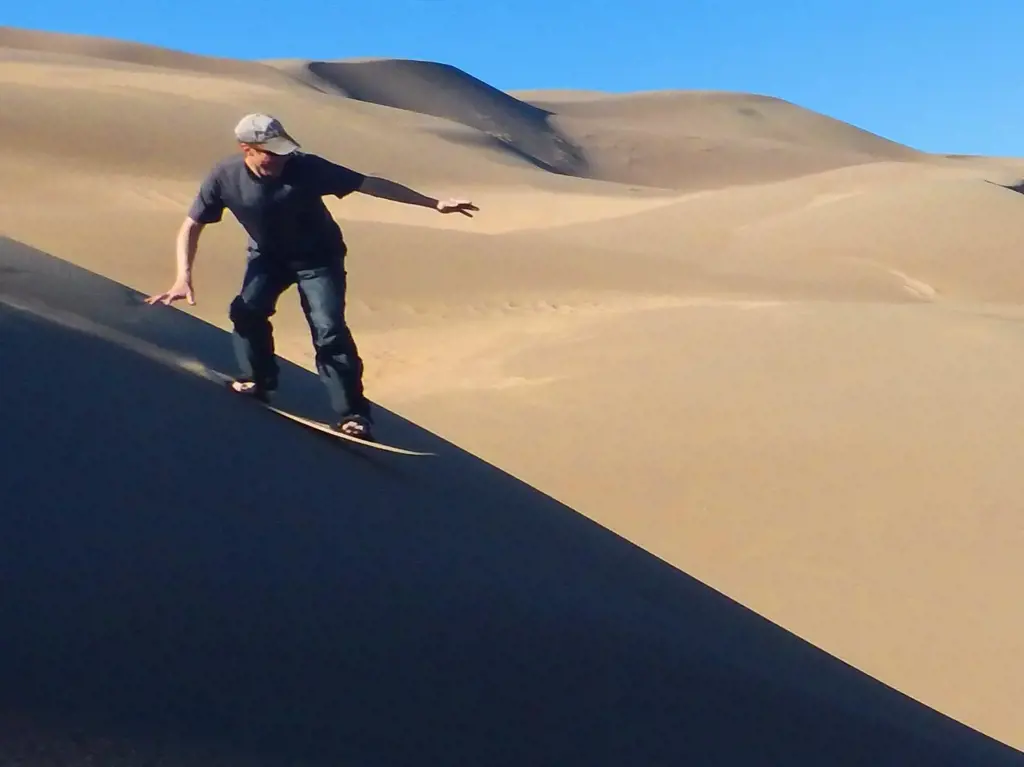
When visiting a park or any recreational area for sandboarding or sledding activities, it is common to wonder whether you can bring your own equipment or if it is available for rental at the venue. The answer to this question may vary depending on the specific park or location you plan to visit. However, here are some general guidelines to help you navigate this topic.
Research the park or recreational area:
Before making any assumptions about bringing your equipment or rental availability, it is important to research the specific park or recreational area you plan to visit. Most parks will have a website or informational resources that outline their rules and regulations. Look for information specifically related to sandboarding or sledding, as this will give you a better understanding of what is allowed and provided.
Check for park-provided equipment:
In some cases, parks may offer equipment rentals for sandboarding or sledding activities. This is especially common in larger, more popular parks that cater to a wide range of outdoor enthusiasts. Check the park's website or contact their visitor center to inquire about rental options. They will be able to provide you with details on cost, availability, and whether reservations are required.
Understand park regulations:
If you are considering bringing your own sandboarding or sledding equipment, familiarize yourself with the park's regulations regarding such items. Some parks may have restrictions on the type of equipment allowed, such as prohibiting certain materials or designs that could damage the environment or pose a safety risk. Additionally, there may be rules surrounding the use of equipment in certain areas of the park. Knowing these regulations beforehand will prevent any surprises or disappointment during your visit.
Consider your skill level:
If you are an experienced sandboarder or sledder, you may have a preference for using your own equipment. Familiarity with your own gear can provide a sense of comfort and control. However, if you are new to these activities or trying them for the first time, it may be more practical to rent equipment initially. Park rentals are often maintained and selected to suit the specific terrain, ensuring a safer and more enjoyable experience for beginners.
Assess the practicality of bringing your equipment:
Apart from park regulations, it is important to consider the practicality of bringing your sandboarding or sledding equipment. Evaluate aspects such as transportation, storage, and the condition of your gear. If bringing your equipment seems burdensome or inconvenient, renting may be a more suitable option.
In conclusion, the availability of sandboarding or sledding equipment for rental at parks and recreational areas can vary. Researching the park's guidelines, checking for rental availability, understanding regulations, and considering your skill level and practicality will help you make an informed decision. By doing so, you can ensure an enjoyable sandboarding or sledding experience while adhering to the rules and regulations of the park you visit.
Essential Items to Pack for Animazement: A Comprehensive Guide
You may want to see also

Are there any essential items that visitors often overlook when packing for a trip to Great Sand Dunes National Park?
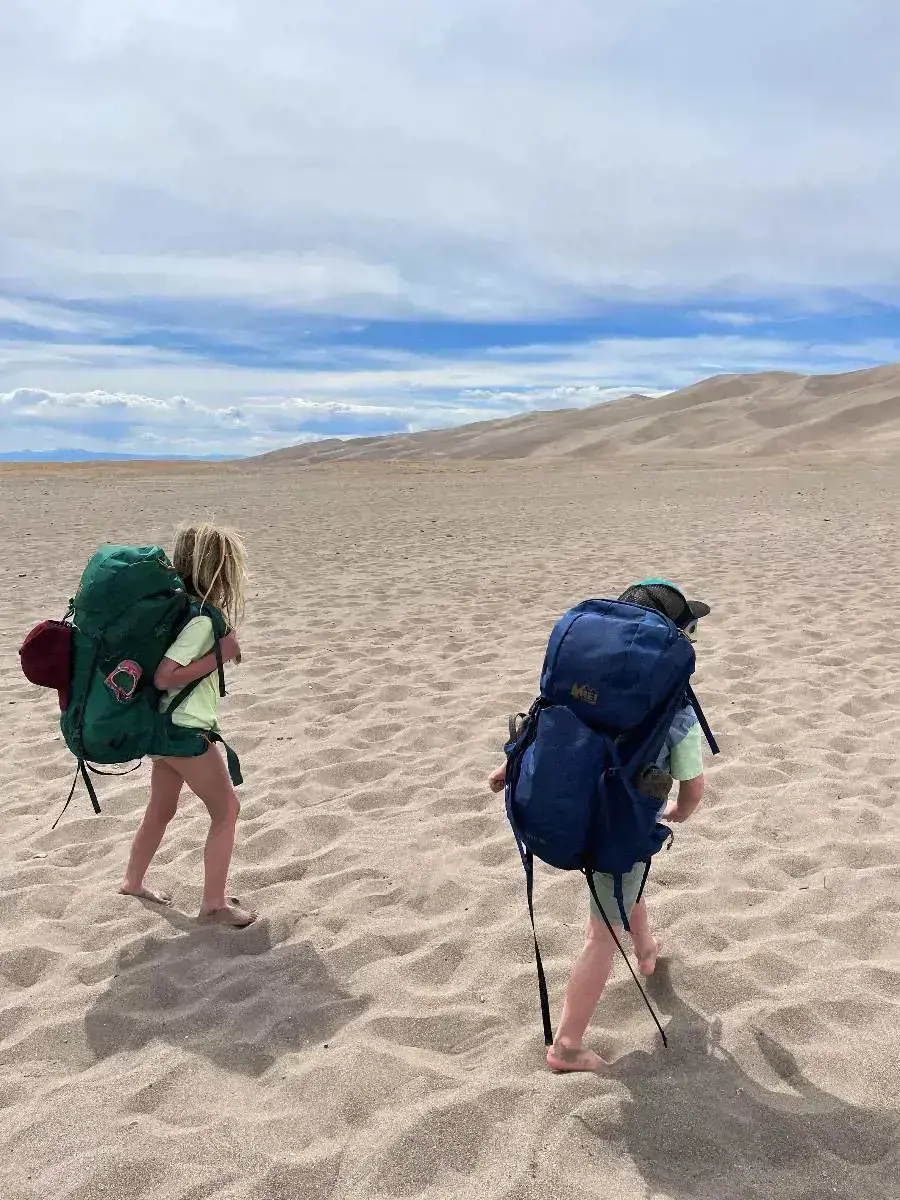
When visiting Great Sand Dunes National Park, it is important to be prepared and pack the necessary items to ensure a comfortable and enjoyable trip. While it can be easy to overlook certain essential items, proper planning can help alleviate any potential issues or inconveniences. Here are some items that visitors often overlook when packing for a trip to Great Sand Dunes National Park:
- Sunscreen: The sun can be incredibly intense at Great Sand Dunes National Park, especially during the summer months. It is essential to pack and apply sunscreen regularly to protect your skin from harmful UV rays. Failure to do so may result in painful sunburns and increased risk of skin cancer.
- Water: With the arid climate in the park, staying hydrated is crucial. Many visitors underestimate the amount of water they will need and end up being caught off guard. It is recommended to bring at least one gallon of water per person per day to ensure you have enough to stay hydrated during your visit.
- Hat and sunglasses: Along with sunscreen, a wide-brimmed hat and sunglasses are essential for protecting your face and eyes from the sun's rays. The sand at Great Sand Dunes can be blindingly bright, and without proper protection, it can be uncomfortable to explore the dunes.
- Closed-toe shoes: While many visitors opt for sandals or flip-flops for a day at the beach, Great Sand Dunes National Park is a different terrain altogether. The sand can get scorchingly hot, making it unbearable to walk on without proper footwear. Closed-toe shoes, such as hiking boots or sneakers, are recommended to protect your feet from the heat and potential hazards.
- Extra layers: The temperature at Great Sand Dunes National Park can vary greatly throughout the day, with hot and sunny weather during the day and cooler temperatures in the evening. It is essential to pack extra layers, such as a light jacket or sweater, to keep warm during chilly nights or changing weather conditions.
- Bug repellent: Mosquitoes and other bugs can be prevalent in the park, especially during the summer months. Packing bug repellent can help prevent discomfort and potential bites during your visit. Additionally, it is advisable to wear long-sleeved shirts and pants to further protect yourself from insect bites.
- Sandboarding equipment: Great Sand Dunes National Park is known for its unique sandboarding opportunities. Visitors often overlook bringing their own sandboarding equipment, assuming they can rent it on-site. However, rental availability may be limited, and it is advisable to bring your own board or sled to fully enjoy this activity.
- First aid kit: Accidents can happen anytime, anywhere. It is always prudent to pack a basic first aid kit with essentials such as band-aids, antiseptic ointment, pain relievers, and any necessary prescription medications. Having a first aid kit on hand can help address minor injuries or ailments during your trip.
In conclusion, when planning a trip to Great Sand Dunes National Park, it is crucial not to overlook essential items. Sunscreen, water, a hat, sunglasses, closed-toe shoes, extra layers, bug repellent, sandboarding equipment, and a first aid kit are all crucial items to consider packing. By ensuring you have these essential items, you can have a more enjoyable and comfortable experience exploring this unique national park.
The Essential Items You Shouldn't Forget to Pack for Your Europe Trip
You may want to see also
Frequently asked questions
It is important to pack layers of clothing for a visit to Great Sand Dunes, as the temperature can vary greatly throughout the day. Be sure to bring comfortable, breathable clothing such as shorts, t-shirts, and light jackets or sweaters for cooler mornings or evenings. It is also a good idea to bring a hat, sunglasses, and sunscreen to protect yourself from the strong sun.
Besides clothing, there are a few specific items that can enhance your visit to Great Sand Dunes. It is recommended to bring a pair of sturdy shoes or hiking boots that can handle walking on sand, as well as a small backpack to carry water, snacks, and any other essentials. Additionally, a camera or smartphone to capture the stunning scenery is always a good idea.
While there are no specific restrictions on what you can bring into Great Sand Dunes, it is important to be mindful of Leave No Trace principles. This means packing out any trash or waste you generate and being respectful of the fragile environment. Additionally, drones are not allowed to fly over the sand dunes.
If you plan on camping at Great Sand Dunes, it is important to pack all necessary camping gear, including tents, sleeping bags, and cooking equipment. It is also recommended to bring extra water and food supplies, as there are no food services available within the park. Don't forget to pack a headlamp or flashlight for navigating the campground at night.
Yes, it is possible to rent sandboards or sleds at the Great Sand Dunes Oasis store located just outside the park entrance. This equipment can add an extra element of fun to your visit as you slide down the sandy slopes. However, it is also allowed to bring your own sandboard or sled if you prefer.





